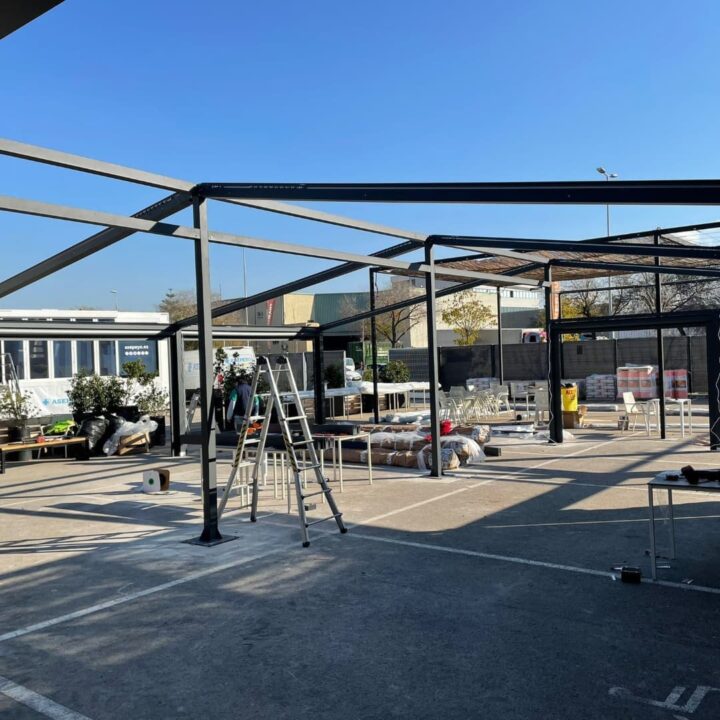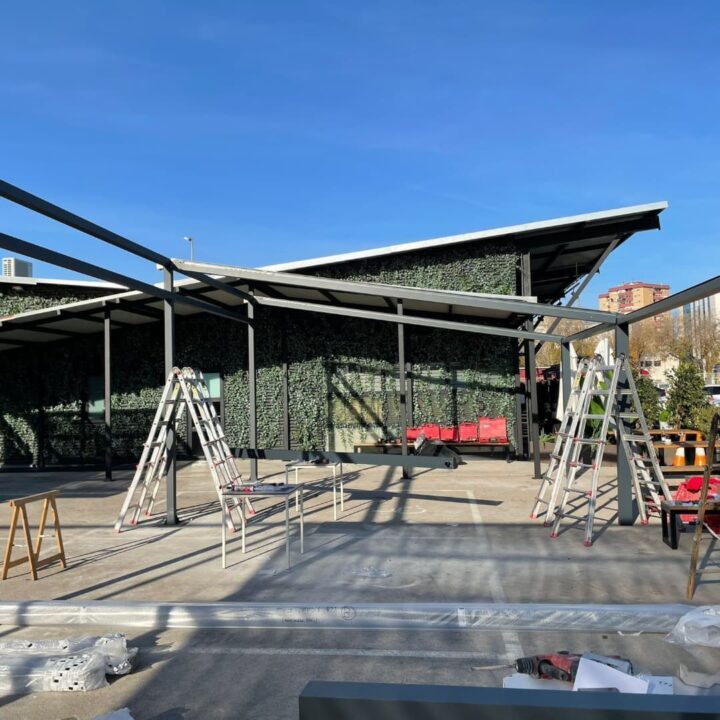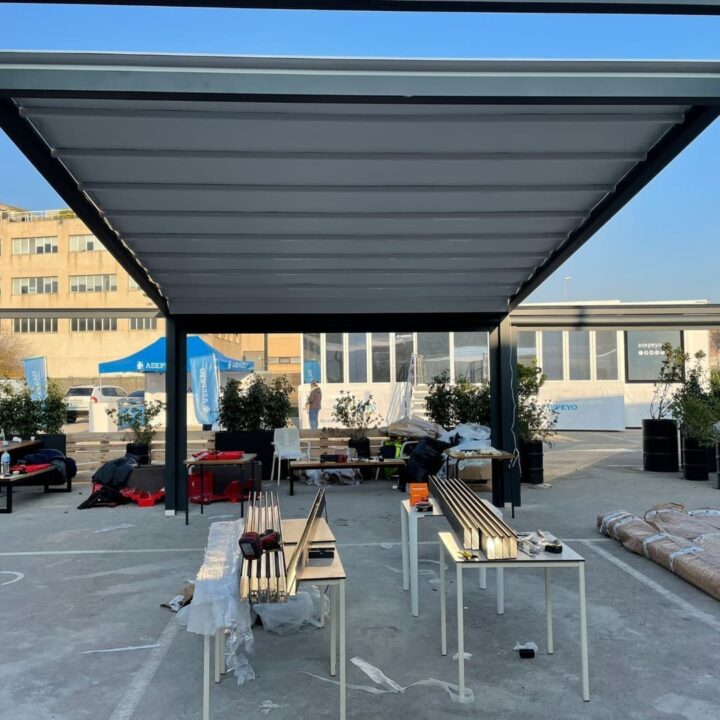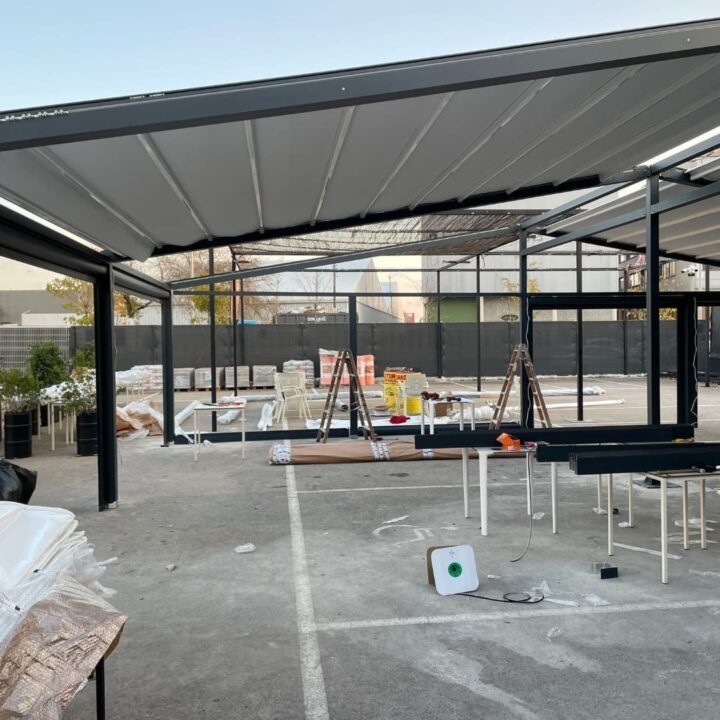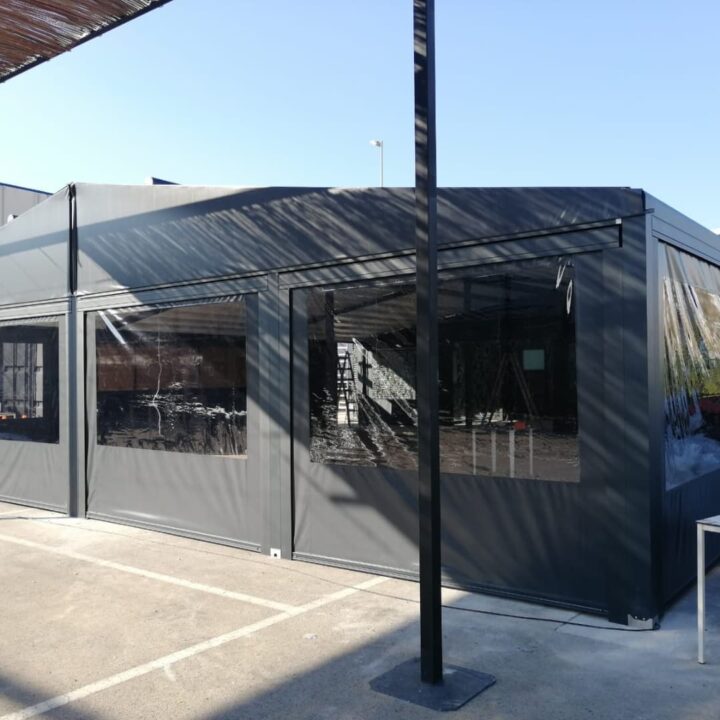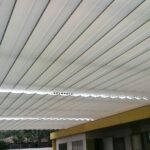El montaje de esta pérgola técnica motorizada estanca de 12×12 metros fue un proceso meticuloso y especializado. Comienza con la preparación del área de instalación, asegurándose de contar con los permisos necesarios y cumplir con las regulaciones locales.
Se procede a montar la estructura de la pérgola, utilizando materiales resistentes y duraderos. Los postes y vigas se instalan cuidadosamente, garantizando su nivelación y fijación segura. Se verifica la calidad y precisión de cada componente para asegurar la integridad estructural de la pérgola.
Una vez que la estructura está en su lugar, se procede a instalar el sistema motorizado. Esto implica la instalación de los motores y mecanismos de control, que permiten abrir y cerrar la pérgola de manera automatizada. Se realizan las conexiones eléctricas y se verifica su correcto funcionamiento.
Además, se asegura la estanqueidad de la pérgola mediante la instalación de un techo y paredes resistentes al agua. Esto garantiza la protección contra la lluvia y otros elementos climáticos adversos, permitiendo que el espacio debajo de la pérgola se mantenga seco y confortable.
Una vez finalizado el montaje, se realiza una inspección exhaustiva para verificar que todos los componentes estén funcionando correctamente. Se realiza una prueba del sistema motorizado y se brinda al cliente una explicación detallada sobre su uso y mantenimiento adecuado.
PROYECTO:
TIPOLOGÍA:
Terms:
clientE:
MAterial:
date:
Design in Details
In design, we bring characteristics of the natural world into built spaces, such as water, greenery, and natural light, or elements like wood and stone. Encouraging the use of natural systems and processes in design allows for exposure to nature, and in turn, these design approaches improve health and wellbeing. There are a number of possible benefits, including reduced heart rate variability and pulse rates, decreased blood pressure, and increased activity in our nervous systems, to name a few.
Over time, our connections to the natural world diverged in parallel with technological developments. Advances in the 19th and 20th centuries fundamentally changed how people interact with nature. Sheltered from the elements, we spent more and more time indoors. Today, the majority of people spend almost 80-90% of their time indoors, moving between their homes and workplaces. As interior designers embrace biophilia.
[30m2]
bedroom
[22m2]
bathroom
[28m2]
workspace
[15m2]
kitchen area
Incredible Result
Establishing multi-sensory experiences, we can design interiors that resonate across ages and demographics. These rooms and spaces connects us to nature as a proven way to inspire us, boost our productivity, and create greater well-being. Beyond these benefits, by reducing stress and enhancing creativity, we can also expedite healing. In our increasingly urbanized cities, biophilia advocates a more humanistic approach to design. The result is biophilic interiors that celebrate how we live, work and learn with nature. The term translates to ‘the love of living things’ in ancient Greek (philia = the love of / inclination towards), and was used by German-born American psychoanalyst Erich Fromm in The Anatomy of Human Destru ctiveness (1973).

